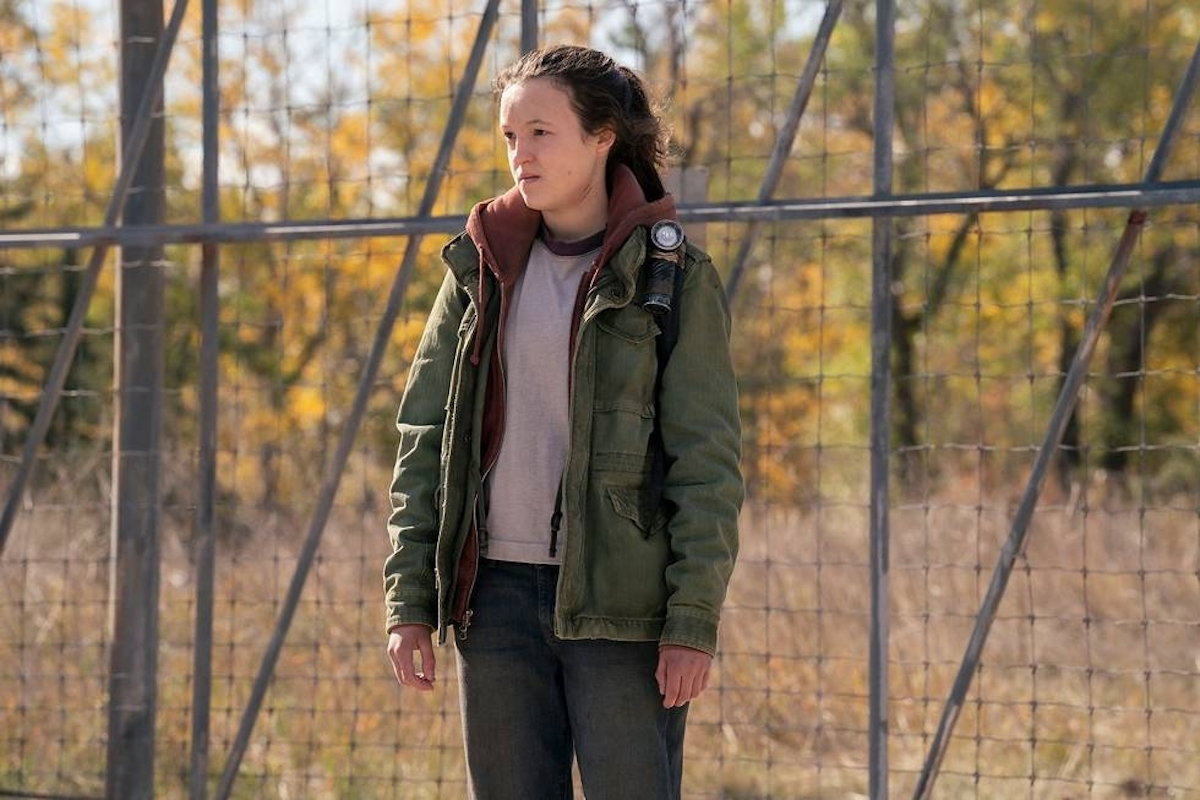Where does The Last of Us go after the heartwrenching story in episode 3? Episode 4 doesn’t reach the same emotional heights as Bill and Frank’s love story, but it does have some quietly moving moments—centered, weirdly enough, around a children’s joke book.
Early in the episode, Ellie pulls a joke book out of her backpack while Joel is siphoning gas from a car. In a scene taken directly from an Easter egg in the game that activates if you don’t move on from an area fast enough, she opens the book and proceeds to tell Joel some of the most ridiculously awful jokes you’ve ever heard. “It doesn’t matter how much you push the envelope—it’ll still be stationary!” “What does a mermaid wear to her math class? An algae-bra!” These jokes are so bad they’ll make your skin peel.
Why the joke book is such a moving character trait
In episode 4, we learn a tiny bit more about Ellie’s past. After she shoots the guy who’s choking Joel, she admits that she’s fired a gun at someone before. She’s not very good at it, and the experience is still really painful and upsetting for her, but it’s not her first time.
Ellie, at 14, has grown up way too fast. She’s been through military school. She drops F-bombs every 30 seconds. She’s been attacked by the Infected. She poses in front of a mirror with her new gun, loving it so much that she even sniffs it at one point. In episode 1, when Joel has a flashback to Sarah’s death and kills the FEDRA soldier, Ellie looks on in naked fascination. This kid never got to have a childhood.
And yet … there’s that joke book.
If you’re the kind of person who loved jokes books as a kid, you know that most kids grow out of them by the time they hit puberty. The audience for the kind of jokes in Ellie’s book is usually around 7-10 years old (I know—I used to be a children’s librarian). That’s not to say that no one in high school goes around telling corny one-liners like “Why was the scarecrow given an award?” but if you did, it definitely got you some weird looks.
The fact that Ellie has latched onto this joke book shows that even as she tries to hype up how tough she is, she’s still clinging to some semblance of the innocence she never got to experience. She’s forced to swing between wild extremes: a hardened survivor of a militarized fungal apocalypse, and a child who’s delighted at corny jokes.
It’s also significant that it’s the joke book that finally helps Ellie break through Joel’s defenses—first when he finishes the scarecrow joke for her, and then when he can’t help but laugh at the diarrhea joke (with, you’ll notice, Sarah’s watch prominently placed in the frame). Joel, still raw over Sarah’s death, has spent the entire series trying to keep Ellie at arm’s length. In episode 1, we see that he’s more or less succeeded in walling himself off when he’s able to toss the child’s body in the fire, but now, in spite of himself, he’s starting to let Ellie in.
And anyone who’s played the game knows how devastating that connection will likely be in the season finale.
How do children in The Last of Us handle the apocalypse? Not well.
Ellie isn’t the only one clinging to childhood in episode 4. We also meet Sam, a child who draws pictures of superheroes in his hideout, and then uses the same paint to draw a mask on his face when he holds Joel at gunpoint.
While Bill and Frank showed us how people have tried to rebuild their lives in the wake of Cordyceps, the show’s depiction of its children—Sarah, the child in episode 1, Ellie, and Sam—shows how great the psychological toll of the pandemic has been. The adults in the show have had too much trauma of their own to really help kids deal with what’s happened, and as Joel tells Ellie at the end of the episode, it doesn’t get easier as you get older. Although we’ve seen bits of kindness here and there, these kids are growing up in an unimaginably brutal world, whether they’re in a Quarantine Zone or out in the wild.
It’s a sobering reminder that in catastrophes like war or a global pandemic, it’s the most vulnerable among us who usually pay the highest price.
(featured image: HBO Max)










Published: Feb 5, 2023 10:00 pm